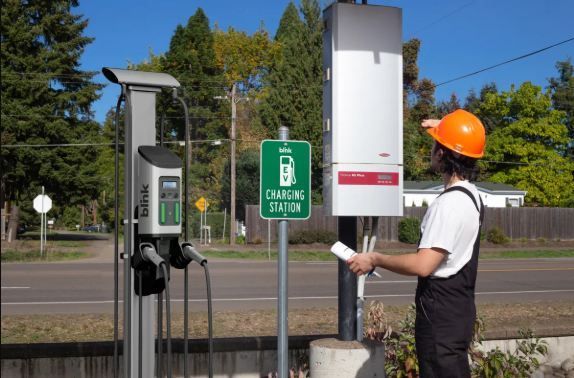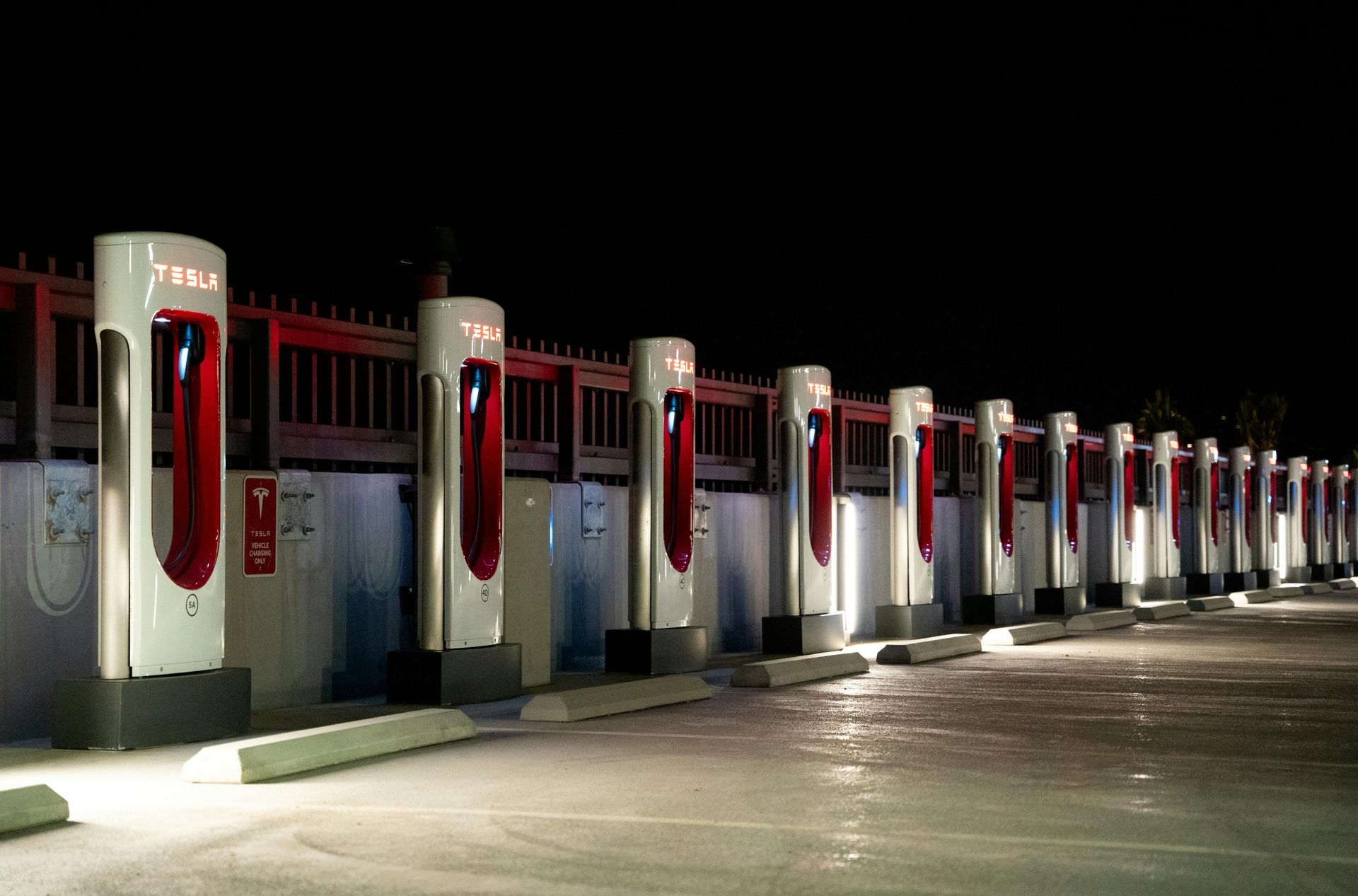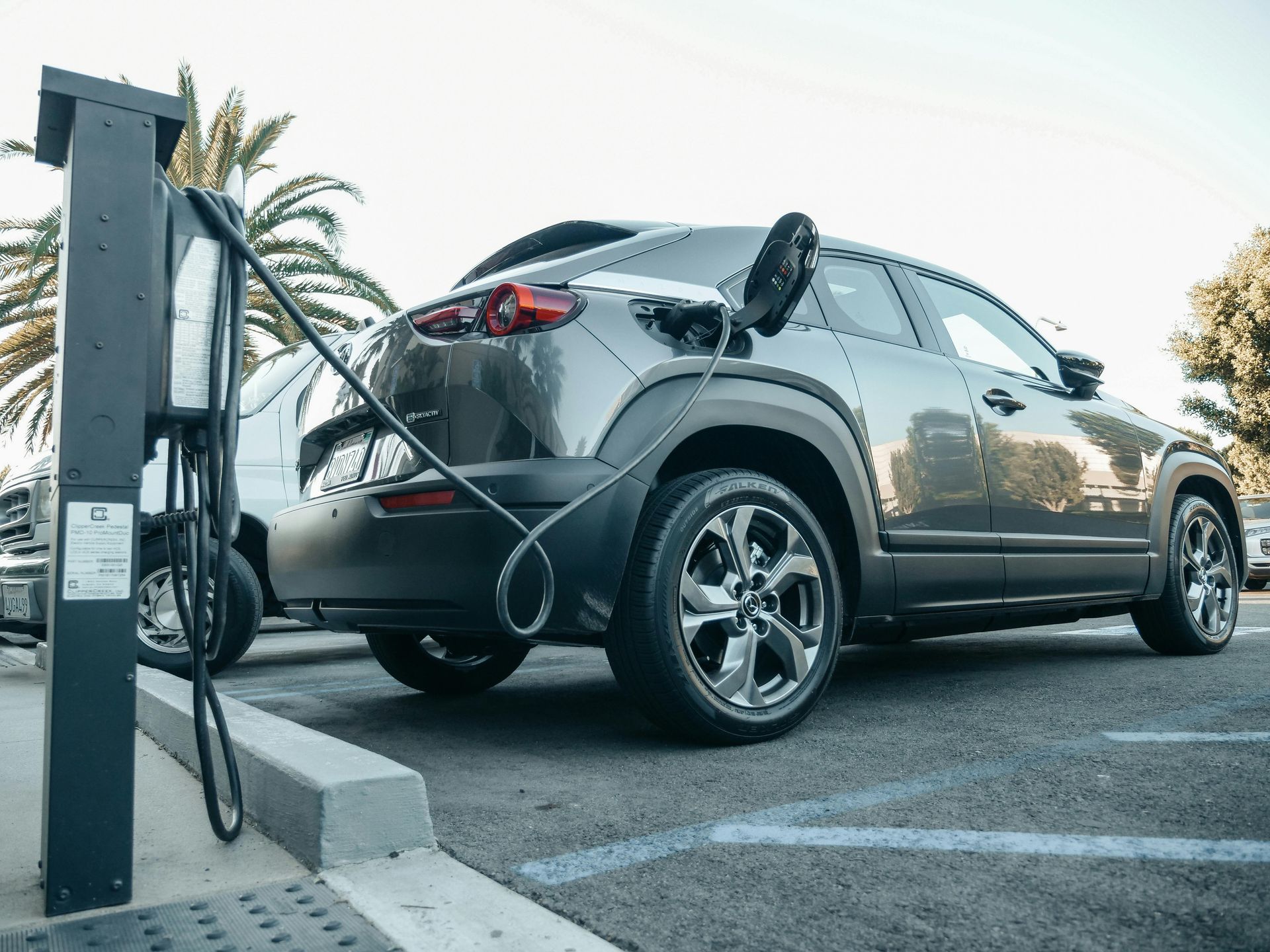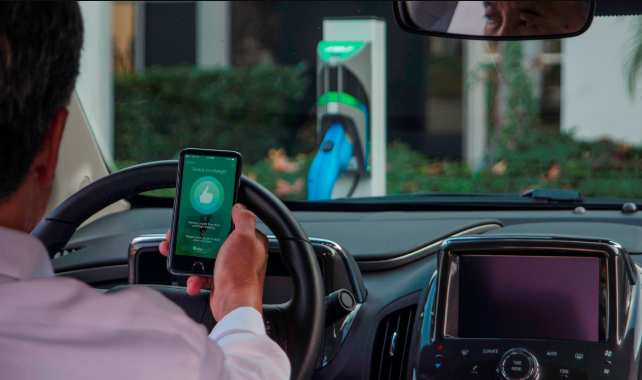Powering the Future: Renewable Energy's Essential Role in Electric Vehicle Charging
Explore the intersection of renewable energy and EV charging, from basic concepts to practical implementation strategies.
Introduction
As electric vehicles transform our roads, an equally important revolution is happening in how we power them. The true environmental potential of electric vehicles can only be realized when they're charged with clean, renewable energy. While an EV charged with electricity from a coal-fired power plant still produces fewer emissions than a conventional vehicle, charging with renewable energy dramatically amplifies the environmental benefits.
The synergy between renewable energy and electric vehicles represents one of our most promising pathways to sustainable transportation. This connection creates a virtuous cycle: as renewable energy makes EVs cleaner, increasing EV adoption drives demand for more renewable electricity generation.
Across the Greater Toronto Area, from downtown condos to suburban homes in Mississauga and Brampton to properties in Hamilton, Ajax, and up to Barrie, residents and businesses are increasingly exploring how renewable energy can power their electric transportation future. In this comprehensive guide, we'll explore the intersection of renewable energy and EV charging, from basic concepts to practical implementation strategies.
1. Understanding Renewable Energy Sources
Solar Power: Harnessing the Sun
Solar energy represents the most accessible renewable power source for most EV owners, particularly for residential charging. Photovoltaic (PV) panels convert sunlight directly into electricity, providing a perfect complement to home EV charging:
- Rooftop potential: The average home in the Greater Toronto Area receives sufficient sunlight to generate significant power, even accounting for seasonal variations.
- Direct connection: Solar systems can be integrated with home EV charging stations for seamless power delivery.
- Energy banking: Grid-tied systems allow homeowners to generate solar credits during daylight hours that can be used for nighttime charging.
Even in Ontario's climate, modern solar technology has proven remarkably effective. With panel efficiency continuing to improve year after year, the return on investment for solar installations has become increasingly attractive for homeowners throughout the GTA and surrounding regions.
Wind Energy: Capturing Natural Flows
While less practical for individual homeowners, wind energy plays a crucial role in greening the grid that powers public charging networks and home charging:
- Ontario's wind capacity: The province has substantially increased wind generation, particularly in areas west of Toronto toward Hamilton and along the Great Lakes.
- Time-of-use alignment: Wind generation often peaks during evening and overnight hours, aligning well with typical EV charging patterns.
- Seasonal complementarity: Wind energy production often increases during winter months when solar production decreases, providing year-round renewable coverage.
For EV drivers in Ontario, understanding the province's wind generation patterns can help optimize charging times to maximize renewable energy usage.
Hydroelectric Power: Reliable Baseload Renewable
Ontario benefits from significant hydroelectric resources, providing a stable base of renewable energy:
- Historical infrastructure: Established hydroelectric facilities like those at Niagara Falls provide consistent renewable baseload power.
- Low carbon intensity: Ontario's hydro resources contribute to the province having one of the cleaner electricity grids in North America.
- Pumped storage potential: Emerging technologies allow hydro resources to serve as energy storage, further supporting renewable integration.
The combination of hydroelectric baseload with growing solar and wind capacity means that EV drivers throughout the Toronto area and beyond increasingly have access to renewable energy, whether they generate it themselves or draw from the grid.
2. Benefits of Charging with Renewable Energy
True Zero-Emission Transportation
Charging electric vehicles with renewable energy creates a genuinely zero-emission transportation system:
- Elimination of operational emissions: No tailpipe pollutants or greenhouse gases at any point in the energy chain.
- Life-cycle benefits: Research shows EVs charged with renewables have 80-90% lower lifetime carbon emissions than conventional vehicles.
- Local air quality improvements: Particularly valuable in high-density urban areas like downtown Toronto, Mississauga, and Brampton where air quality challenges exist.
For environmentally conscious drivers across the GTA, pairing an electric vehicle with renewable energy represents the gold standard for sustainable personal transportation.
Energy Independence and Resilience
Beyond environmental benefits, renewable charging offers practical advantages:
- Insulation from energy price fluctuations: Self-generated renewable energy provides protection against rising utility costs.
- Charging during grid outages: Advanced systems with battery storage can provide emergency charging capability during power interruptions.
- Reduced grid strain: Home renewable generation decreases pressure on local distribution networks, particularly in rapidly growing communities like Milton and Vaughan.
This resilience becomes increasingly valuable as extreme weather events become more common, potentially affecting grid reliability in areas throughout the Greater Toronto region.
Economic Advantages
The financial case for renewable-powered EV charging continues to strengthen:
- Decreasing installation costs: Solar costs have fallen approximately 60% over the past decade, improving payback periods for homeowners in Oakville, Burlington, Richmond Hill, and beyond.
- Available incentives: Various programs at federal, provincial, and local levels can reduce upfront costs for renewable energy installations when combined with EV infrastructure.
- Property value increases: Homes with both solar systems and EV chargers command premium prices in competitive markets like Toronto, Markham, and surrounding areas.
When calculated over the life of the system, renewable energy often provides the lowest-cost electricity available for EV charging, especially as utility rates continue their historical upward trend across Ontario.
3. How to Incorporate Renewable Energy at Home
Assessing Your Home's Renewable Potential
Before installing renewable energy systems, it's important to evaluate your property's specific characteristics:
- Solar evaluation: Roof orientation, shading patterns, and structural capacity all affect solar potential. Properties throughout the GTA have varying solar potential based on tree coverage and building orientation.
- Available space: Standard residential installations require approximately 300-400 square feet of unshaded roof area for a system that can significantly offset EV charging needs.
- Local regulations: Permitting requirements vary across municipalities from Toronto to Hamilton to Barrie, with specific considerations for heritage districts and conservation areas.
Professional assessment is essential, as many factors affecting renewable potential aren't immediately obvious to homeowners.
Solar + EV Charging: The Perfect Pairing
Integrating solar power with EV charging represents one of the most accessible renewable energy applications:
- Sizing considerations: A typical EV requires approximately 2,000-4,000 kWh annually for average driving distances, which translates to a 5-10 kW solar system for full coverage.
- Smart charging integration: Modern EV chargers can communicate with solar systems to optimize charging during peak production periods.
- Battery storage options: Adding home battery systems allows storage of daytime solar production for evening charging, particularly valuable for homeowners in areas with limited net metering.
Throughout the Greater Toronto Area, we've installed systems that provide nearly 100% renewable charging for customers' electric vehicles, creating truly zero-emission transportation solutions.
Installation Process and Considerations
Understanding the installation process helps homeowners prepare for renewable integration:
- Site assessment: Professional evaluation of your property's specific characteristics and energy needs.
- System design: Custom configuration based on EV charging requirements, existing electrical infrastructure, and renewable generation potential.
- Permitting and approvals: Navigation of local requirements, which vary from straightforward processes in tech-forward communities like Markham to more complex procedures in historic districts of Toronto.
- Installation and commissioning: Professional installation with minimal disruption, typically completed within 1-3 days for standard residential systems.
While DIY solar kits exist, professional installation ensures optimal performance, safety, and compliance with local building codes and electrical standards across all GTA municipalities.
4. The Future of Renewable Energy in EV Charging
Bidirectional Charging: Vehicles as Energy Assets
Emerging technology allows electric vehicles to not only consume renewable energy but also support its integration into the broader energy system:
- Vehicle-to-home (V2H): Using your EV's battery to power your home during outages or high electricity rate periods.
- Vehicle-to-grid (V2G): Allowing utilities to draw small amounts of power from connected EVs during peak demand, with compensation to vehicle owners.
- Virtual power plants: Networks of connected EVs acting collectively as grid resources, particularly valuable in densely populated areas like Toronto and its surrounding communities.
These technologies transform EVs from simple transportation devices into valuable components of a renewable energy ecosystem, providing storage and flexibility that help balance variable renewable generation.
Integrated Renewable Charging Infrastructure
Next-generation charging infrastructure increasingly incorporates renewable generation:
- Solar canopies and carports: Combined shelter and charging structures with integrated solar generation, becoming more common in commercial areas throughout the GTA.
- Wind-solar hybrid stations: Particularly effective in locations like the Lake Ontario shoreline where both wind and solar resources are abundant.
- Battery-buffered fast charging: Using stationary batteries charged by renewables to provide high-power charging without straining grid connections.
These integrated approaches maximize renewable usage while providing enhanced charging experiences for drivers.
Renewable Hydrogen and Alternative Approaches
Beyond direct electrical charging, other renewable pathways are emerging:
- Green hydrogen production: Using renewable electricity to produce hydrogen for fuel cell vehicles, potentially valuable for heavy transportation applications.
- Renewable synthetic fuels: Creating carbon-neutral liquid fuels for applications where direct electrification remains challenging.
- Second-life battery applications: Repurposing older EV batteries for stationary storage to support renewable charging infrastructure.
These diverse approaches ensure that renewable energy can power all segments of the transportation sector, even those with unique requirements.
5. Community and Government Initiatives
Local Government Programs Across the GTA
Municipalities throughout the Greater Toronto Area have implemented programs supporting renewable EV charging:
- Toronto Green Standard: Encourages renewable energy integration with EV infrastructure in new developments.
- Mississauga Climate Change Action Plan: Provides guidance and potential incentives for commercial renewable charging installations.
- Durham Region's Electric Vehicle Strategy: Promotes renewable-powered charging corridors connecting Ajax, Pickering, and surrounding communities.
- York Region's Sustainable Buildings Initiative: Supports integrated approaches to building electrification, including renewable EV infrastructure in communities like Richmond Hill and Vaughan.
These local initiatives complement provincial and federal programs, creating layered support for renewable charging implementation.
Utility Partnerships and Programs
Electric utilities serving the GTA have developed innovative programs supporting renewable EV charging:
- Time-of-use optimization: Rate structures that encourage charging during periods of high renewable generation.
- Renewable energy certificates: Programs allowing EV owners to purchase certificates ensuring their charging is matched with renewable generation.
- Demonstration projects: Pilot programs showcasing cutting-edge integration of renewables and EV charging, particularly in high-visibility locations across Toronto and surrounding cities.
Engaging with these utility programs can provide additional financial benefits while supporting broader renewable energy adoption.
Community Solar and Shared Renewable Models
For those unable to install their own renewable generation, community models provide alternatives:
- Community solar subscriptions: Allowing residents of condos in Toronto or apartments in Mississauga to virtually participate in solar generation.
- Cooperative ownership models: Shared investment in larger renewable installations with proportional benefits to members.
- Workplace renewable charging: Employer-provided renewable charging that extends clean energy benefits to employees who cannot install home systems.
These approaches democratize access to renewable charging, ensuring that all EV drivers throughout the Greater Toronto Area can participate in the clean energy transition regardless of their living situation.
Conclusion
The integration of renewable energy and electric vehicle charging represents a transformative opportunity to create truly sustainable transportation. By powering EVs with clean, renewable electricity, we eliminate emissions not just from the tailpipe but from the entire energy chain.
For residents across the Greater Toronto Area—from downtown Toronto to the suburbs of Mississauga and Brampton, from lakefront communities in Burlington and Oakville to northern reaches in Richmond Hill and Barrie—renewable charging options are increasingly accessible. Whether through home solar installations, community renewable programs, or strategically timed charging to align with grid renewable generation, every EV driver can take steps toward cleaner transportation.
As technology continues to advance and costs continue to decline, the barriers to renewable charging will further diminish. What was once available only to early adopters is rapidly becoming mainstream, creating a pathway for widespread adoption of truly zero-emission mobility throughout the GTA and beyond.
Explore Renewable Charging Solutions with Us!
At MyEVExperts, we specialize in creating integrated renewable charging solutions for homes and businesses throughout the Greater Toronto Area. From downtown Toronto condos to suburban homes in Mississauga, Brampton, and Vaughan, to properties in Hamilton, Burlington, Ajax, Pickering, and as far north as Barrie, our experienced team designs and installs custom renewable charging systems that maximize environmental benefits while minimizing costs.
Whether you're interested in a simple solar-ready EV charger or a comprehensive system with solar generation and battery storage, we provide expert guidance at every step.
Contact us today to learn how renewable energy can transform your EV charging experience!











